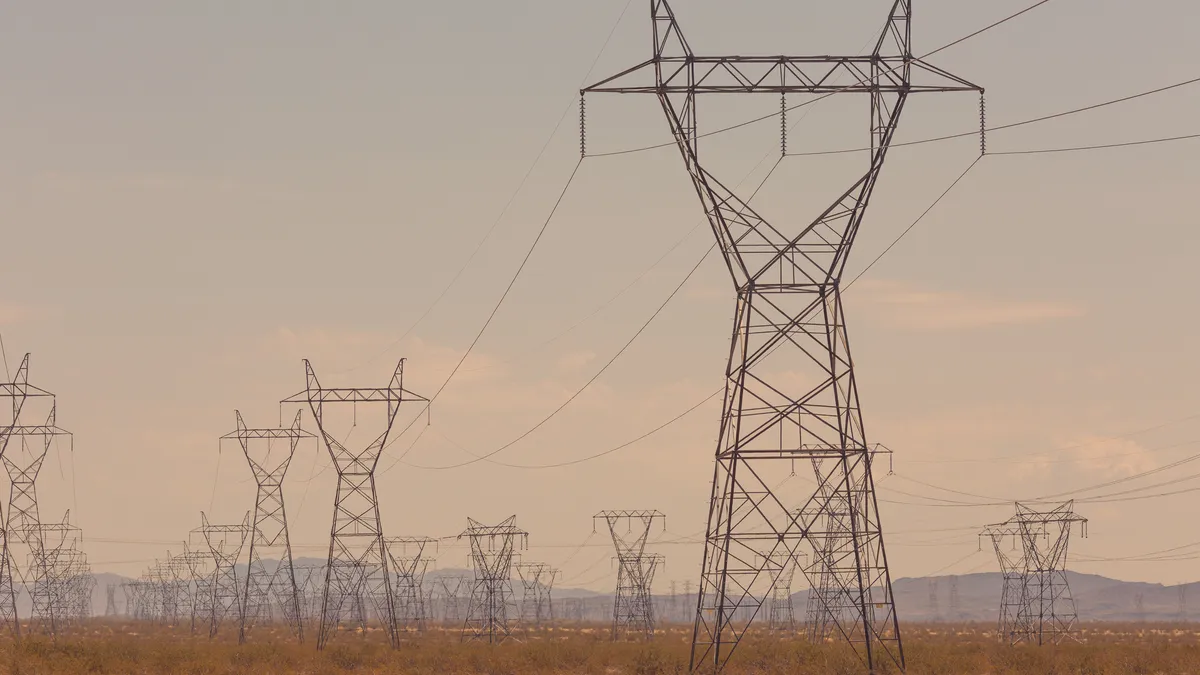Dive Brief:
-
The Department of Energy on Thursday proposed a two-year review process for interstate transmission projects on federal land, a move renewable energy trade groups supported.
-
Under the proposed Coordinated Interagency Transmission Authorizations and Permits program, transmission developers would go through a mandatory pre-application process that aims to ensure federal agencies have all needed information before their permit reviews begin. The DOE would act as the lead permit review agency under the program.
-
The proposal is a “very big deal,” according to Rob Gramlich, president of consulting firm Grid Strategies. “Interagency coordination is critical to get the necessary approvals from the multiple federal agencies involved in long linear infrastructure like transmission, especially in the West with all the federally managed land,” he said in an email.
Dive Insight:
The federal permitting process for transmission lines is especially important in the West — a region with rich wind and solar resources where the federal government owns about 46% of the land.
The proposal is part of efforts by the Biden administration and the Federal Energy Regulatory Commission to spur large-scale transmission development.
Additional transmission capacity can deliver renewable energy from remote areas where it’s produced to areas where it’s needed, improve grid reliability and help lower electricity costs. But developing major power lines, such as the TransWest Express transmission project, can take more than a decade, in part because of the permitting process.
In its proposal, the DOE said it expects the CITAP program will “substantially accelerate” the transmission development and permitting process on federal land. Participating projects must be at least 230 kV and be significant enough to require an environmental impact statement.
To speed the review process, DOE proposed making an existing “integrated interagency pre-application” process mandatory. In the process, project developers would submit resource reports and public participation and engagement plans, developed with guidance from federal agencies.
The DOE would develop a project-specific schedule that establishes binding deadlines for federal authorizations and environmental reviews. The DOE on Thursday released a draft standard schedule that will serve as a template for individual project reviews.
Under the proposal, DOE will act as the lead agency for all project reviews and will prepare a single EIS to serve as the National Environmental Policy Act document for all federal authorizations.
By acting as the lead agency, the DOE said it expects it will be able to improve its NEPA processes over time, leading to greater efficiencies for project proponents and federal agencies.
The DOE expects the CITAP program will increase the number of transmission projects seeking federal approval, helping reduce carbon emissions by allowing more wind and solar energy to flow onto the grid, according to the proposal.
Renewable energy and transmission proponents praised the DOE’s plan.
“Implementing a one-stop-shop for agency reviews and setting strict deadlines for this process will represent a fundamental leap forward from the current system, which requires applicants to juggle each agency’s timeline separately and can sometimes delay a project by years,” Christina Hayes, Americans for a Clean Energy Grid executive director, said in a statement. The group advocates for the transmission sector.
The proposal is a “positive step,” but more permitting reform is needed, according to the American Clean Power Association.
“It’s critical that Congress build upon these actions and tackle comprehensive, meaningful permitting reform that, among other things, improves the permitting process for high-impact transmission lines,” Carrie Zalewski, ACP vice president of markets and transmission, said in a statement.
The DOE plans to take comments on its proposal for 45 days after it is published in the Federal Register.














